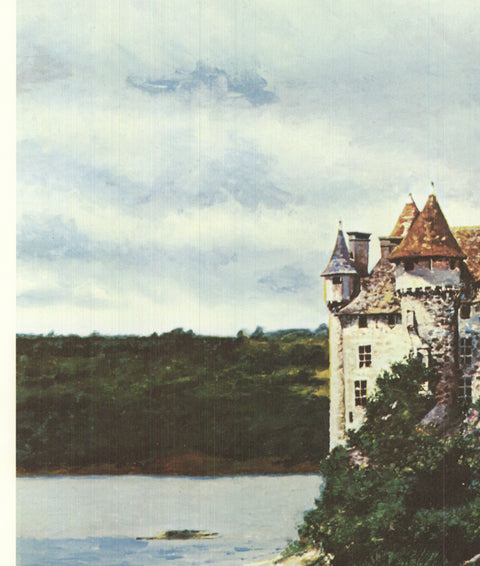



Morley, Malcolm
MALCOLM MORLEY Rhine Chateau, 1972 - Signed
Title
$1,500.00
Sku: YY0477-B
Artist: Malcolm Morley
Title: Rhine Chateau
Year: 1972
Signed: Yes
Medium: Offset Lithograph
Paper Size: 22.75 x 28.25 inches ( 58 x 72 cm )
Image Size: 12.75 x 18.5 inches ( 32 x 47 cm )
Edition Size: 200
Framed: No: Inquire with our experts for framing suggestions.
Condition: A: Mint
Additional Details: Offset lithograph on wove paper Signed in pencil by the artist Published by Mother Lode Editions and Hundred Acres Gallery This limited-edition print by Malcolm Morley was part of the seminal 1972 portfolio Radical Realism I, which showcased leading figures in the Photorealist movement. Morley's Rhine Chateau exemplifies his pioneering "super-realism" approach—a term he preferred over "photorealism"—where he meticulously translated photographic images into painted works using a grid system. This technique allowed him to explore the interplay between mechanical reproduction and painterly interpretation, often infusing his works with personal and historical narratives. Morley's contribution stood alongside works by contemporaries such as Richard Estes, Ralph Goings, and John Salt, marking a significant moment in the evolution of contemporary realism. His distinctive style, characterized by a blend of precise detail and expressive brushwork, challenged traditional boundaries and solidified his position as a transformative figure in late 20th-century art.
Artist: Malcolm Morley
Title: Rhine Chateau
Year: 1972
Signed: Yes
Medium: Offset Lithograph
Paper Size: 22.75 x 28.25 inches ( 58 x 72 cm )
Image Size: 12.75 x 18.5 inches ( 32 x 47 cm )
Edition Size: 200
Framed: No: Inquire with our experts for framing suggestions.
Condition: A: Mint
Additional Details: Offset lithograph on wove paper Signed in pencil by the artist Published by Mother Lode Editions and Hundred Acres Gallery This limited-edition print by Malcolm Morley was part of the seminal 1972 portfolio Radical Realism I, which showcased leading figures in the Photorealist movement. Morley's Rhine Chateau exemplifies his pioneering "super-realism" approach—a term he preferred over "photorealism"—where he meticulously translated photographic images into painted works using a grid system. This technique allowed him to explore the interplay between mechanical reproduction and painterly interpretation, often infusing his works with personal and historical narratives. Morley's contribution stood alongside works by contemporaries such as Richard Estes, Ralph Goings, and John Salt, marking a significant moment in the evolution of contemporary realism. His distinctive style, characterized by a blend of precise detail and expressive brushwork, challenged traditional boundaries and solidified his position as a transformative figure in late 20th-century art.
